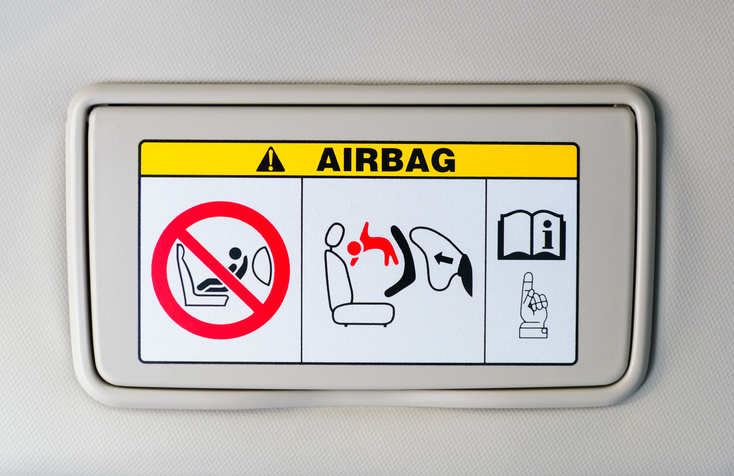The airbag system is also called the supplementary restraint system (SRS) or the supplemental inflatable restraint (SIR), and acts as a secondary line of defense against injury in a crash. The primary restraint system is the seat belt.
In the event of a car accident airbags are designed to protect the passengers from injury… Unless the aren’t functioning properly, or the passengers have not taken the appropriate precautions.
So, what can you do to ensure that your airbags provide the protection they’re designed to provide?
Sit in the Right Place
Airbags, especially those in the front seat, are built for the average adult. Airbags in the front seat deploy at the wrong height and with more force than children below a certain height and weight can safely withstand.
Children are safest when seated in the back or center of the vehicle in the appropriate child safety seat. These seats help provide extra protection in a collision, especially for infants. In a collision, they can prevent injury cause by an airbag, in addition to injuries caused by the crash.
Adults, even in the front seat, should sit as far back as possible while still having access to the brake, steering wheel, and accelerator. Sitting far from the front of the vehicle means it’s less likely that the airbag will hit with too much force or that the passenger will come into contact with the dash.
Wear a Seatbelt
Airbag safety for kids means staying in the backseat, but airbag safety for any vehicle passenger means wearing a seatbelt. Airbags are the secondary restraint system (which is why some dashboard warning lights say SRS). Seatbelts are much more effective at preventing an injury in a crash.
Listen to Your Warning Lights
Every time the engine starts, the crash sensors, which let the airbags know when to deploy, are checked. If, when the vehicle starts, the airbag warning light remains on, there might be something wrong with the system. It is never safe to drive a vehicle without properly functioning airbags, so if you notice the airbag warning light, always have a professional inspect the vehicle as soon as possible.
After a Collision, Have Airbags Inspected
Airbags that are deployed during a crash are not designed to be reused, and without airbags, the safety of the vehicle is compromised even if everything else is in proper working order. Airbag systems, including the crash sensors, should be inspected and replaced by an authorized repair center following a collision.
Work with Your Repair Technician
When it comes to your safety and the safety of others on the road, there is no room for shortcuts. Always have a professional inspect your airbag system after a crash, or if it is not working right.




